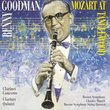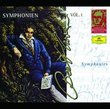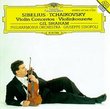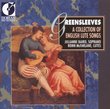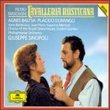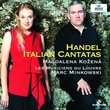| All Artists: Antoine Brumel, Peter Phillips, Tallis Scholars Title: Antoine Brumel: Missa Et ecce terrae motus Members Wishing: 1 Total Copies: 0 Label: Gimell UK Release Date: 7/10/2001 Album Type: Import Genres: Pop, Classical Styles: Vocal Pop, Opera & Classical Vocal, Historical Periods, Early Music Number of Discs: 1 SwapaCD Credits: 1 UPCs: 755138102620, 5011728102629 |
Search - Antoine Brumel, Peter Phillips, Tallis Scholars :: Antoine Brumel: Missa Et ecce terrae motus
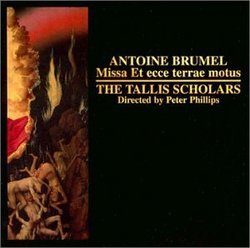 | Antoine Brumel, Peter Phillips, Tallis Scholars Antoine Brumel: Missa Et ecce terrae motus Genres: Pop, Classical
|
Larger Image |
CD DetailsSimilarly Requested CDs
|
CD ReviewsEarth moving... FrKurt Messick | Bloomington, IN USA | 07/15/2004 (5 out of 5 stars) "--Antoine Brumel-- Brumel, born in 1460, was one of the students of the great composer Josquin des Pres, becoming one of the great Franco-Flemish composers in his own right. He was particularly noted for his liturgical compositions,. He worked at the Cathedrals in Chartres and Laon, and was employed for a time in Notre Dame in Paris. There is evidence he also worked in Geneva, Chambery and Rome, having a rather wandering lifestyle common to musicians and composers of the time. His career highlight was serving as successor of his teacher Josquin in the court of Ferrara for 15 years, until his death in 1520.--Missa Et ecce terrae motus-- This is a magnificient 12-part mass, the `Earthquake' mass. There are twelve voices employed throughout almost the entire mass, a rarity then or now. It was preserved through the auspices of Orlandus Lassus, who thought highly of the piece. It is hard to describe this mass in terms of polyphony, given the overwhelming number of voices that seemingly run together in non-conventional ways. Phillips describes the effect here as one of `decorating colossal harmonic pillars'. The piece is a bit slow-moving in tempo. --Lamentations and Magnificat secundi toni-- This setting for the Lamentations is the only surviving one of Brumel's, low and slow harmonic movement that is very sombre, perfect for the darkness that grows throughout the liturgy of Holy Week leading up to Good Friday and Holy Saturday. The second tone Magnificat is very close to the style of the 12-part mass, with chant in the top part. It is an interesting departure from typical compositions of the time.--Liner Notes-- Being internationally acclaimed, the Tallis Scholars' CDs typically present their commentary and texts in English, French, German and Italian (together with any Latin texts); that is true of this disc. The cover art also typically represents visual arts contemporary with the compositions - here there are two panels from `The Last Judgement' by Rogier van der Weyden, an artist of the generation prior to Brumel--The Tallis Scholars-- The Tallis Scholars, a favourite group of mine since the first time I heard them decades ago, are a group dedicated to the performance and preservation of the best of this type of music. A choral group of exceptional ability, I have been privileged to see them many times in public, and at almost every performance, their singing seems almost like a spiritual epiphany for me, one that defies explanation in words. Directed by Peter Phillips, the group consists of a small number of male and female singers who have trained themselves well to their task. Their recordings are of a consistent quality that deserve more than five stars; this particular disc of pieces by Brumel is worthy of a place on the shelf of anyone who loves choral music, liturgical music or Gregorian chant, classical music generally, or religious music. It is remarkable, both in composition and performance. The original recording was made in 1992 in the church of St. Peter and St. Paul, Salle, Norfolk, one of their favourite recording sites." Sonorous esseyo | Jersey City, NJ United States | 09/18/2001 (4 out of 5 stars) "The mass for 12 voices is wonderful. The sonority of the recording truly does bring out what the liner notes describes as Missa Et ecce terrae motus' "colossal harmonic pillars". The Tallis Scholars were not shy about emphasizing some of the more rhythmic sections but for the most part the transitions are natural.Of the other 2 pieces on this recording, "Lamentations" is my favorite. The voices are wonderfully balanced and being scored for low voices (ATTB) very sonorous. Typical of the Tallis Scholar's other recordings, the altos, tenors, and basses are truly first class.Unfortunately in many Tallis Scholar's recordings, the sopranos are just too loud/over-miked and it is their seemingly belligerent hooting that completely ruins many of the Tallis Scholar's otherwise beautiful recordings. But fortunately the sopranos have been somewhat contained in this recording and the performance is musically and emotionally convincing. Highly recommended. 4.5 stars." The Best Recorded Performance... Giordano Bruno | Wherever I am, I am. | 06/24/2009 (5 out of 5 stars) "... of one of the greatest musical wonders of all time! I've had this recording since 1992, as well as the competing performances by the Huelgas Ensemble and by Dominique Visse, but I've suffered seismic trepidation whenever I've tried to review it. And then I listened to it today, and felt I had to proclaim its brilliance once and for all.
The Missa Et ecce terrae motus is constructed on a portion of the antiphon for lauds on Easter, which uses the text from the Gospel of Luke that describes how the earth was shaken at the moment of Christ's death. It's obvious that Antoine Brumel (1460-c.1520) intended a musical 'depiction' of an earthquake, and of a sublime moment of eschatological potency. The music is monumental and stately, yet at the same time agitated , with musical motifs scattering like birds above the long-note canonic tenors, an apt portrayal of deep-moving tectonic blocks. This is a true 12-voice composition, not a polychoral work for two or three choruses singing in response to each other. Rather, the voices group in shifting ensembles according to range, the trebles singing as one contrapuntal choir, and altos another, and so forth, and then the six upper voices coalescing as if singing a motet a sei voci, followed by the six lower voices singing a similar passage, and then the passages overlapping each other. There's no way anyone short of a musical prodigy can hear all the complexities of this composition in one listening session... perhaps not even in ten sessions, untill you begin to 'assemble' the piece in your musical memory. Reading through the score would be a major aide, if you can find a copy; that way you'll see just how artfully Brumel has distributed his phrases to create such an unsettling sense of movement. Voices rise and fall, slide over each other, topple, clamber back, seem to shift from shrieks of horror to exclamations of exaltation in musical micro-moments. I'm not always impressed with Peter Phillips's conducting, but on this CD he's got most things right, and I think it's purely by musical instinct rather than scholarship. His tempi are brisker than either of the other recordings, and a sense of accelerating excitement is the result. The Tallis Scholars are two on a part for this performance --and I KNOW that one on a part would be better, more dramatic, transparent rather than solemnly resonant -- but they sing with supreme discipline and precision. Both of the other recordings are muddy and top-heavy by comparison, even though Dominique Visse uses trombones in place of voices on some lines. This interpretation is perhaps as well-done as possible on a recording, though it isn't quite a match for a live performance. Spatial relationship between the 12-voices add another dimension to the tussle between chaos and divine might. I would stage the piece with the twelve singers standing in a shallow arc, a least three feet apart; I might even have them lean forward or raise their faces as they sing passages. When you listen to this CD on your home system, I urge you to tinker with your EQ and your stereo separation, to replicate as much as possible of the spatial flux of the music. This is a composition everyone has to hear sometime in her/his musical life. Let's call it the Bruno MUST BUY for June, 2009." |

 Track Listings (7) - Disc #1
Track Listings (7) - Disc #1